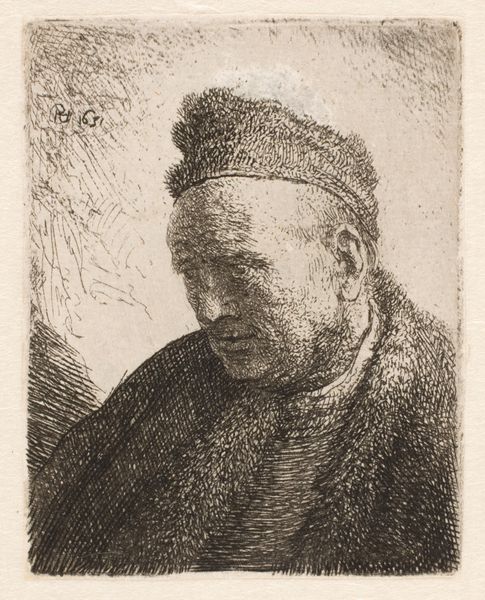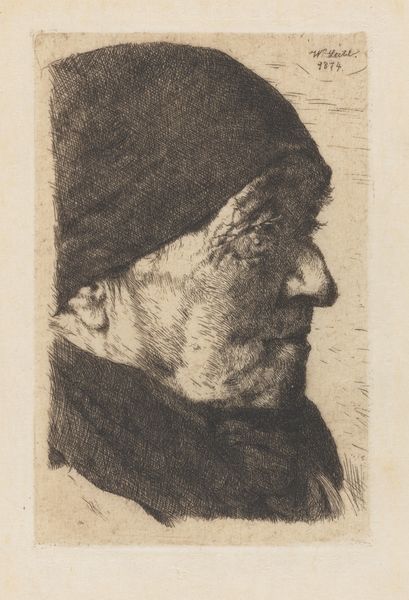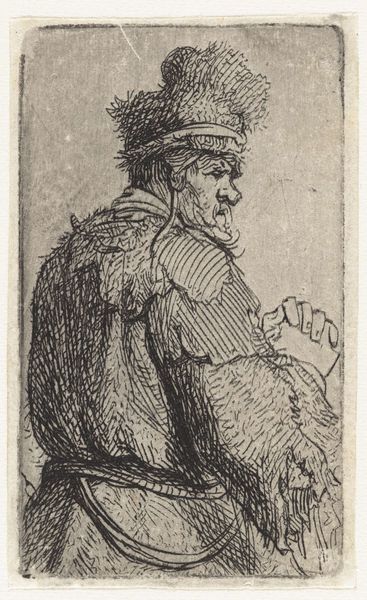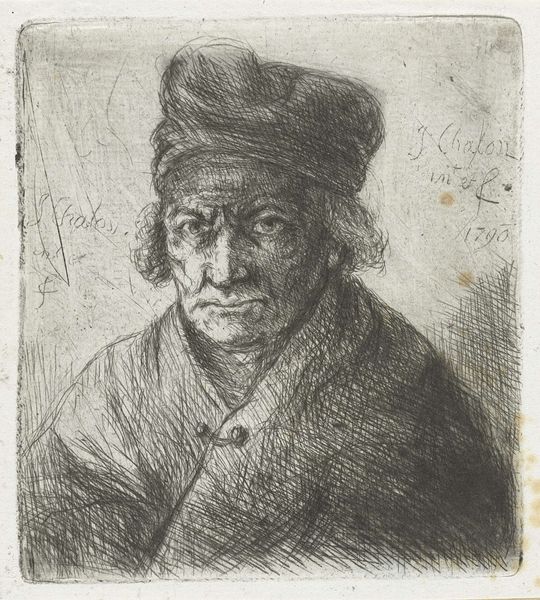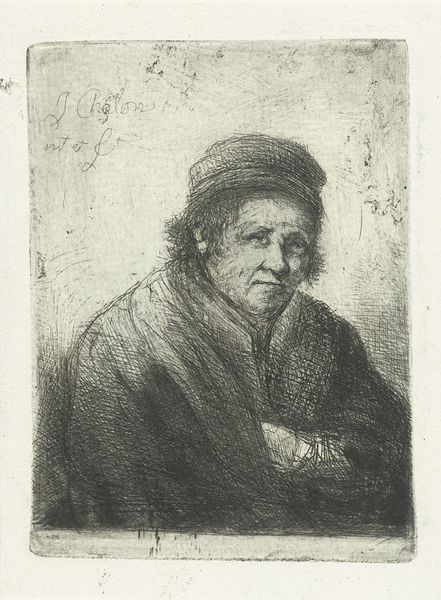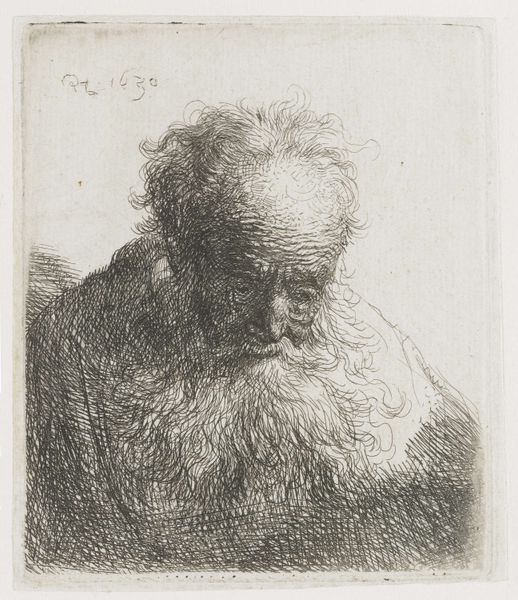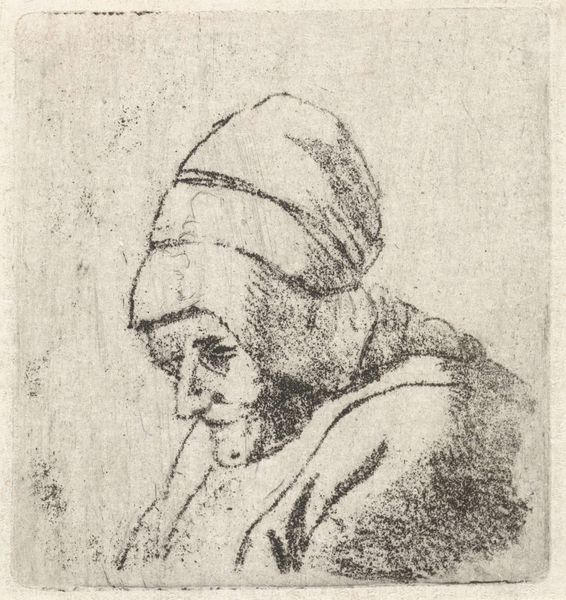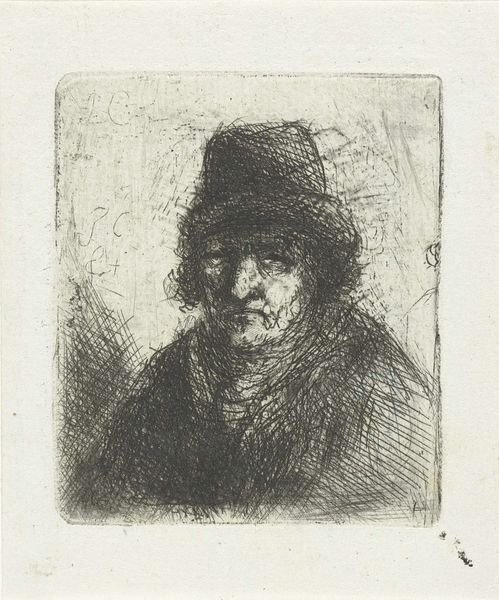
print, etching
#
portrait
#
baroque
#
dutch-golden-age
# print
#
etching
#
figuration
Dimensions: height 74 mm, width 58 mm
Copyright: Rijks Museum: Open Domain
Curator: Here we have Rembrandt van Rijn's "Beardless Man in a Fur Cloak and Cap: Bust," an etching dating back to 1631. Editor: Immediately, I'm struck by how the crosshatching defines texture, turning simple lines into heavy fur and worn skin. You can almost feel the weight of the cloak, see the age etched into his face. Curator: That textural richness is part of Rembrandt's visual language, connecting this individual to broader themes of Dutch Golden Age society. The fur cloak, the cap—these are symbols of a rising merchant class, of prosperity gained. It’s not merely a portrait; it speaks to cultural shifts. Editor: I see the symbols, yes, but I'm more interested in the *process* of capturing them. Look at how the plate itself must have aged; it feels deeply rooted in material reality. How did he apply the acid? How many proofs were struck before he deemed it complete? I wish we could examine it up close. Curator: A physical connection to the artistic practice is fascinating. For me, this man’s downcast gaze and shadowed face evoke melancholy, reminding me of mortality, a somber Dutch *vanitas* tradition of meditating on worldly matters. The fleeting nature of time reflected in the etching lines. Editor: And isn't the making itself, the very act of repetition allowed by the print medium, a negotiation with time? Each impression shares something unique—minute differences created by the inking and pressing – altering its inherent symbolism each time. It almost becomes mass-produced in some senses. Curator: Indeed, this print transforms intimate experience into an object with potential cultural transmission through copies. But it's not just about making art widely accessible. This individual gains symbolic potency. Editor: It's remarkable how studying an etched line's trajectory can illuminate entire production chains – a fascinating confluence of art, economics, and technology in early 17th century Netherlands. It feels good to reflect on what exactly contributed to the culture back then. Curator: Looking closely at the print allows us to dive into complex human stories. We've glimpsed art historical legacies and explored a symbol from the Dutch Golden Age, but there's so much more this artwork can speak to.
Comments
No comments
Be the first to comment and join the conversation on the ultimate creative platform.
